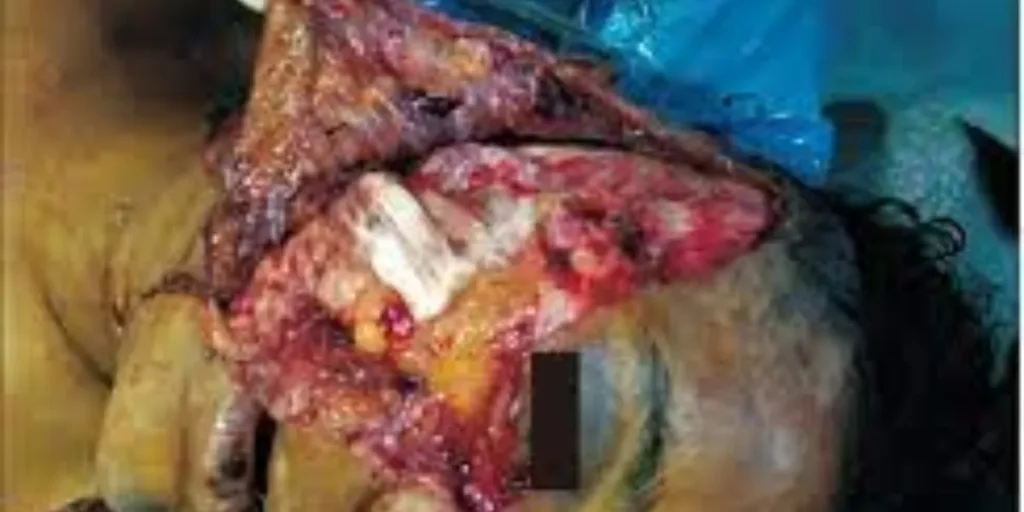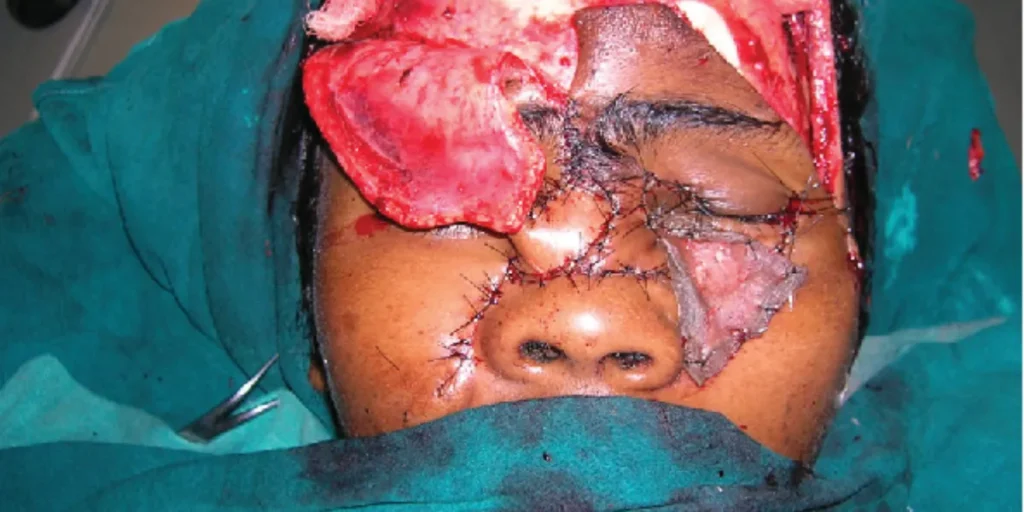Table of Contents
ToggleIntroduction
Degloving injuries to the face can be devastating, both physically and psychologically. Understanding what these injuries entail, their causes, effects, and treatment options is crucial for those affected and for medical professionals involved in their care.
What are Degloved Face Images?
A degloving injury occurs when the skin and underlying tissue are forcefully separated from the underlying structures, such as muscles, bones, or organs. When this happens to the face, it can result in severe disfigurement and functional impairment.
Causes of Degloving Face Injuries
Degloving injuries to the face can result from various causes, including:
- Motor vehicle accidents
- Workplace accidents, especially in industries involving heavy machinery
- Falls from heights
- Animal bites or attacks
- Sports injuries, particularly in high-impact sports like football or hockey
Effects of Degloving Face Injuries
The effects of degloving injuries to the face can be both physical and emotional. Some common effects include:
- Severe facial disfigurement
- Loss of skin and soft tissue
- Exposed bones, muscles, or other facial structures
- Difficulty with facial movements, such as eating, speaking, or smiling
- Psychological trauma, including depression, anxiety, and body image issues
Treatment Options for Degloved Face Injuries
Treatment for degloving injuries to the face typically involves a combination of surgical and non-surgical interventions. The specific approach will depend on the severity of the injury and the individual’s unique circumstances. Some common treatment options include:
- Immediate First Aid: Stabilizing the patient and controlling bleeding to prevent further damage.
- Surgical Reconstruction: Reattaching the degloved skin and tissue, often requiring multiple surgeries.
- Skin Grafts: Using skin from another part of the body to cover exposed areas.
- Tissue Expansion: Gradually stretching the skin to create extra tissue for reconstruction.
- Physical Therapy: Rehabilitation to improve facial function and mobility.
- Psychological Support: Counseling and therapy to address emotional trauma and body image issues.
Comparing Treatment Options
| Treatment Option | Description |
|---|---|
| Surgical Reconstruction | Involves reattaching the degloved skin and tissue, often requiring multiple surgeries. |
| Skin Grafts | Uses skin from another part of the body to cover exposed areas. |
| Tissue Expansion | Gradually stretches the skin to create extra tissue for reconstruction. |
| Physical Therapy | Rehabilitation to improve facial function and mobility. |
| Psychological Support | Counseling and therapy to address emotional trauma and body image issues. |
FAQs About Degloved Face Injuries
Q: Can degloved face injuries be prevented? A: While some accidents are unavoidable, taking precautions such as wearing protective gear, practicing workplace safety protocols, and following traffic laws can help reduce the risk of degloving injuries.
Q: How long does it take to recover from a degloved face injury? A: Recovery time varies depending on the severity of the injury and the chosen treatment approach. It can range from several weeks to months or even years.
Q: Will I ever look or function normally again after a degloving injury to my face? A: With advances in medical technology and skilled surgical techniques, many individuals can achieve significant improvement in both appearance and function following treatment for degloving injuries. However, outcomes can vary, and ongoing rehabilitation may be necessary.
Degloving injuries to the face are complex and often require specialized treatment to achieve the best possible outcomes. By understanding the causes, effects, and treatment options available, individuals affected by these injuries can make informed decisions about their care and take steps toward recovery. If you or someone you know has experienced a degloving injury to the face, seeking prompt medical attention is crucial for a successful outcome.
Seeking prompt medical attention is crucial for a successful outcome in cases of degloving injuries to the face.
Early intervention can help minimize tissue damage, reduce the risk of complications, and improve the chances of achieving satisfactory results. Additionally, seeking support from healthcare professionals, including plastic surgeons, dermatologists, physical therapists, and mental health counselors, can provide comprehensive care to address both the physical and emotional aspects of recovery.

In many cases, the road to recovery from a degloving injury to the face is challenging and requires patience, persistence, and support from loved ones. However, with advancements in medical technology and a multidisciplinary approach to treatment, many individuals can regain function, improve their appearance, and reclaim their quality of life.
It’s essential for individuals recovering from degloving injuries to the face to adhere to their treatment plan, attend follow-up appointments, and actively participate in rehabilitation programs. Maintaining open communication with healthcare providers and expressing any concerns or questions that arise during the recovery process can also contribute to a more successful outcome.
Furthermore, support from family, friends, and support groups can play a crucial role in coping with the emotional challenges associated with facial disfigurement and the trauma of the injury. Connecting with others who have experienced similar injuries can provide valuable insights, encouragement, and solidarity during the recovery journey.
In conclusion, while degloving injuries to the face are devastating, there are treatment options available to help individuals recover and regain their quality of life. By understanding the causes, effects, and treatment approaches for these injuries, individuals can take proactive steps to seek appropriate medical care, engage in rehabilitation, and access emotional support. With time, patience, and a comprehensive treatment plan, many individuals can overcome the challenges posed by degloving injuries and emerge stronger and more resilient.










